I purchased a pair of Rogue’s new Olympic Competition Collars and have been using them for about a good month now. I thought I’d spend a few minutes going over some of the finer points of these collars while also giving you my opinion of them. You know, just in case you have these on your radar.
Update 2017: Rogue updated this collar design. Maybe they saw this review! It works!
Rogue Competition Olympic Collars Review
To give you a quick rundown on these collars, they are CNC-milled compression collars that weigh in at 2½ kilograms each; or 5 kilograms for the pair. They are finished in an attractive hard chrome, and each collar has the Rogue logo laser-engraved into one of three wings – which ironically you cannot see when the collars are on the bar.
They work just like most other weighted Olympic collars. They compress firmly around the bar by turning a T-handle at the end of a bolt, and they can be further adjusted by spinning the inner hub section away from the outer section – the inner section being the top section in the image directly below.
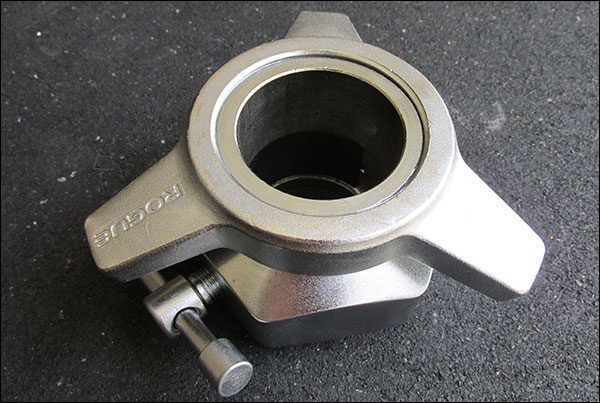
For those of you who have not used this type of collar before, the wings are handles. They give you something to hold on to when spinning that inner section, and there are a couple of reason for why you might be doing that. The first reason is simply to push the plates into the sleeve shoulder for a super tight fit on the sleeve. The second I’ll address in some detail below.
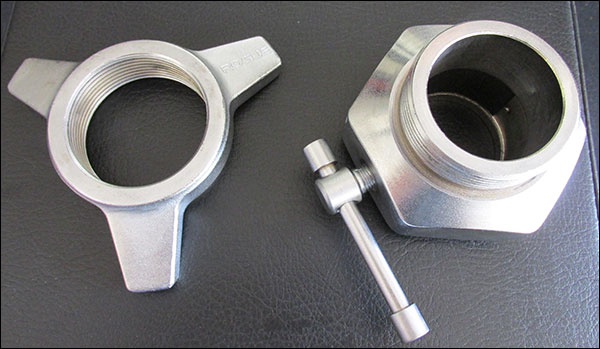
The inside of the collar has a rubber gasket that separates the tightening mechanism from the surface of the sleeve – you can see part of it in the image above. This rubber improves the grip that the collars have on the bar while also protecting the sleeves from scratches.
Weight accuracy is decent, though one of my collars was actually off by 7g more than the allowable +10 grams – and I say allowable only because the product description says that these collars “meet IWF spec and calibration standards (-0/+10 gram tolerance).”
Personally I don’t really care about the weight deviation considering that the two collars are still within 10 grams of each other, and at least they are heavy rather than too light. It’s still my job to share this information though. It wouldn’t be much of a review otherwise.
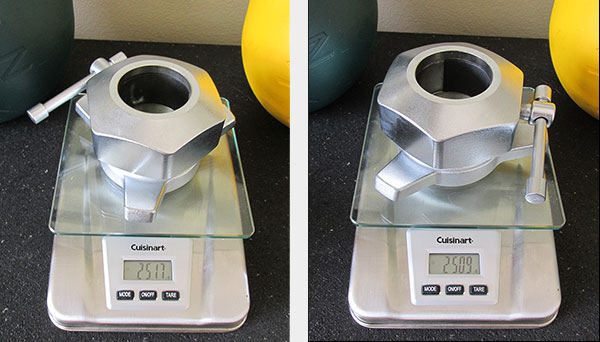
While there is always the chance that my scale is adding a few grams, I did a lot of testing to eliminate the likelihood of that. I do believe the one collar is overweight, but I also believe that it’s a fluke.
I previously mentioned that there is a second reason that you may find yourself fiddling with the inner section of the collar, and it has to do with using change plates outside the collars. I’ll explain…
The sliding T-handle used to tighten down the collars is longer than the collar is. When you tighten the collars down, the diameter of your bar sleeve dictates how far you can turn that handle, and in what position it stops. This position changes from bar to bar and from sleeve to sleeve, and often times you’ll end up with the situation like in the image below.
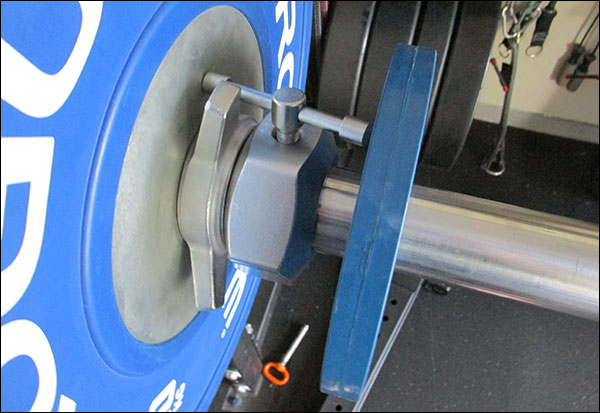
Obviously you’ll want your change plates to be all the way on the bar and flush. You will also want the change plates on both sleeves to be the same distance from the center of the bar – as balance is an important thing.
To correct this little issue with the handle creating a gap between collar and change plates, simply unscrew that inner section far enough away from the outer section so that the collar itself is just a hair longer than the handle; like in the image below. Do this with both sides and everything will now be flush and balanced.
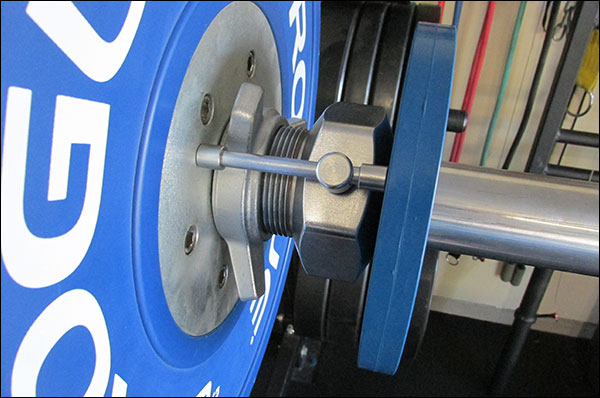
Having the collars expanded to full length does make them a little bulky and cumbersome, and they are always just like a half-turn from falling apart completely, but what can you do, ya know? It’s a very common collar design and its not going anywhere.
If you think that this aspect of the collars will slow you down because you add or remove big plates often, or you use multiple bars, I would suggest springing for stage competition collars – something like the Uesaka Competition Collars that don’t have a handle to get in the way. They are expensive, but with the $205 that these Rogue collars cost, you’re almost there anyway in terms of price.
Then again, if you’re really lucky, both of your collars will end up with the handle in just the perfect position when tightened (below). That is, change plates are flush and the collars are compact – no extra adjustments needed.
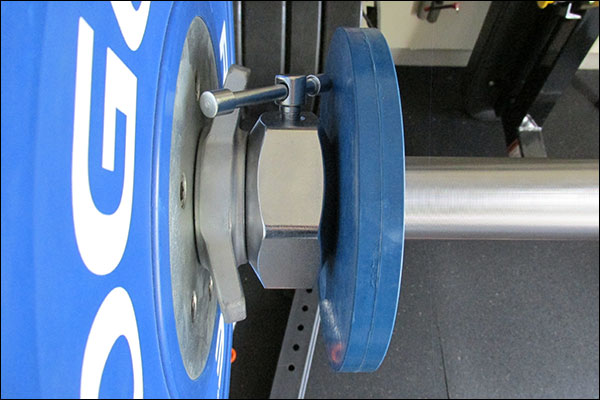
Rogue Competition KG Collar Review – Summary
Overall Rogue’s Oly Collars are great, and I’m content with them. They are accurate, they appear to be put together extremely well, and they hold damn tight to the bar. I happen to think that they look really cool too.
The process of making adjustments to get change plates flush with the collars seems a little clunky, but it’s really not that complicated, and you get good at doing it. If you prefer to lock your change plates inside the collars rather than outside anyway, well you will never have to do anything but turn the T-handle to tighten and loosen your collars – in which case they’re very simple to use.
At $205 + shipping, these collars are a little on the expensive side. Matter of fact, the price is easily the biggest drawback of these collars, but I can’t do or say much about all that. It is what it is.
So, would I recommend the Rogue Oly collars? For an Olympic training center, absolutely! As a treat-yourself, luxury product, why of course! As a necessity in a home or garage gym, not so much. $200+ for a single pair of collars seems rather excessive for one dude (or gal) in a garage gym, but hey, it’s your money!
Update: the design now has the folding tightening arm that gets out of the way for change plates, and the collars are now IPF certified rather than seeking IWF. Much better buy than before.
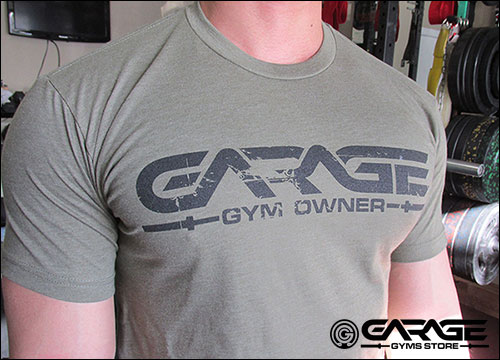

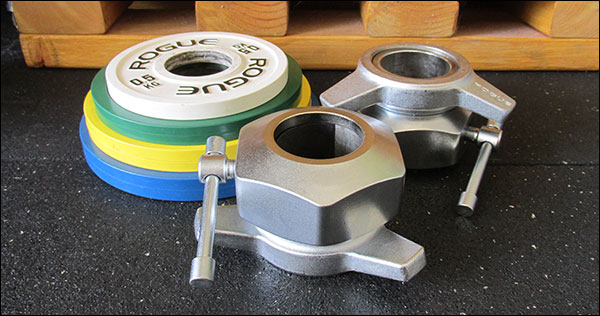
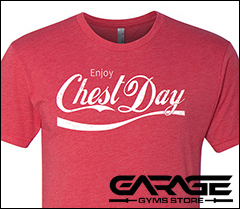
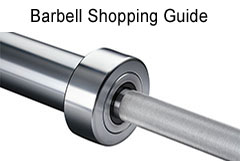
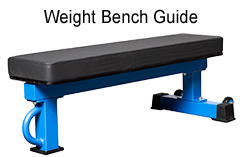
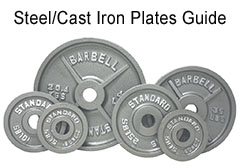
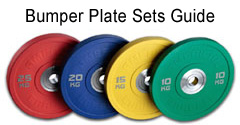
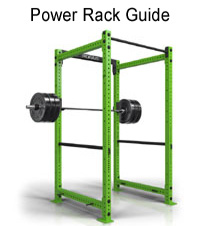
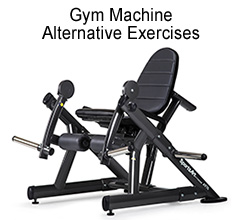

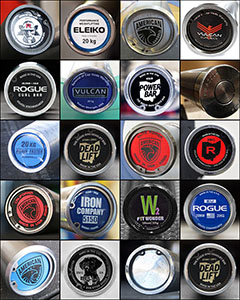

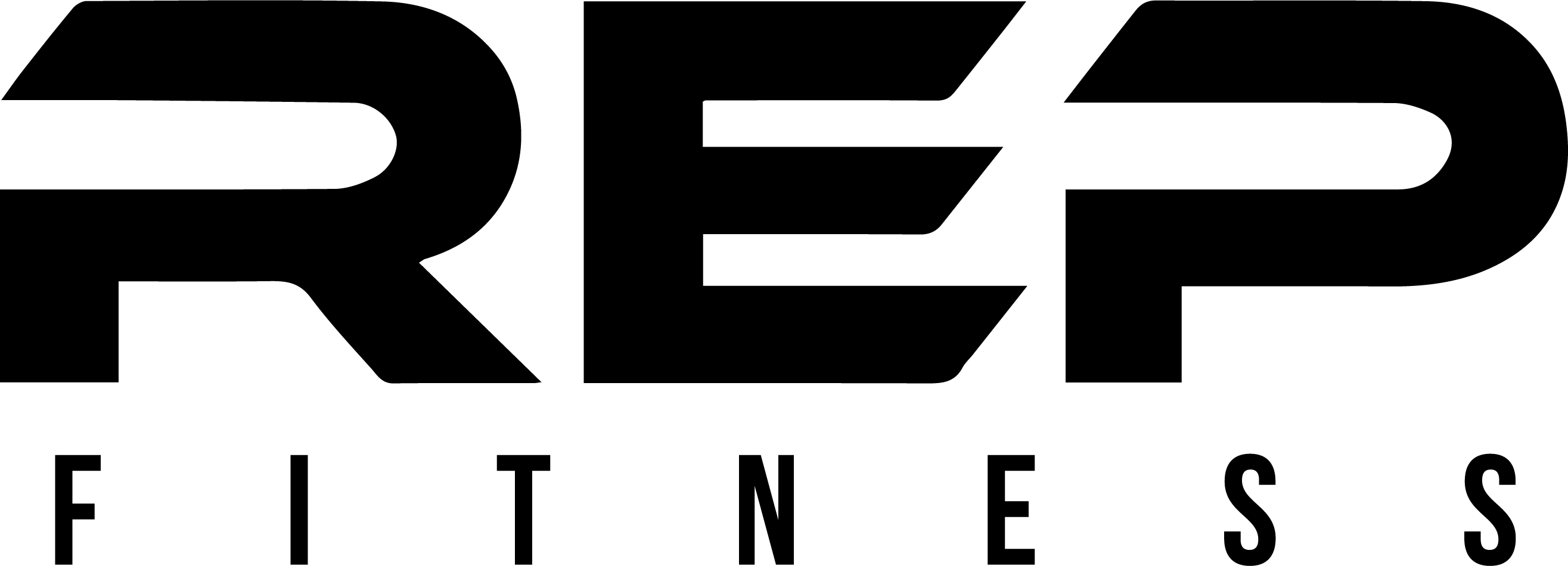
DHS training collars (http://www.dynamicfitnessequipment.com/product-p/htc0050.htm) cost half as much as these and work very well. For a 50mm sleeve, if the tightening crank isn’t flush at max tightness, you can file off ~1mm from the end of the threaded part of the crank (the bit that goes into the collar and presseds against the inner sleeve) and fix the problem forever (I did). They are not IWF certified, but neither are Rogue’s.
So essentially you are paying $106 (more than the price of a second pair of DHS training collars) to have Rogue’s name on the things (note that Rogue’s olympic collars are not even made in the US, they are Chinese like all the rest). Personally I don’t see how this can be justified under any circumstances. If you want IWF-cert collars, buy some. If not, get the cheapest high-quality training collars around (DHS). They are currently out of stock at Dynamic Fitness but given Shanghai Minkow’s capacities I can’t imagine this will be the case for long. Rogue makes some great, innovative equipment in the USA. These collars are none of the above.
I do like DHS collars and I did know about them, but they’re up there with old MDUSA when it comes to complaints about customer service, QC, and returns, so I deliberately did not include them. I’ve asked DHS in CHina if there was another source for DHS in the US because that would be all that DHS needs, but of course they said that Dynamic is the exclusive US distributor. those are a good collar design though – I completely agree.
For anyone that likes the idea of shaving off part of the bolt (which is an excellent idea btw) I suggest taking off fractions of a mm at first. I nerded out hard while playing with the Rogues – I took sleeve measurements from five bars with digital calipers. 10 sleeves, 10 different results ranging from 49.77 to 50.01 mm. A difference of .10 mm was the difference between that handle being parallel with plates, or perpendicular. What I’m saying is that it doesn’t take much, which is why they are so fickle to begin with.
Hey that reminds me, FringeSport (Vaughn) used to sell 2.5kg training collars that looked identical to Eleiko or Ivanko training collars. If a person was primarily interested in service, FringeSport is where I would send them. Naturally, they have stopped selling Olympic training collars ($#@%!). I hope they start again…
I’m not sure how much there is to go wrong with a collar (how badly can you screw up a couple of thread taps? …wait, nevermind) and I’ve been really happy with my DHS collars, but it would be a drag to blow $100 on garbage and be stuck with it. That said, I really like the DHS design — it’s the same as Werksan or other top makes but with a pressure gasket that really couples your plates to the sleeve and stays put. In order to SLOWLY shave off small amounts of the tightening piston, I backed the entire thing out and ground off about 0.2mm with a mill bastard file. You’re right, they’re fiddly — but most people are only ever going to use their comp-style collars on one or maybe two good bars, so this tends to work out OK. (I have an Eleiko comp bar that I bought used at almost half off from the 2015 IWF world championships, and that’s what I use my DHS training collars on.)
On the other end of the spectrum, Xtraining bought Again Faster’s assets and are now selling the old Klokov IWF-style collars for $99. They look OK and are in stock but the Klokov (or AF) brand doesn’t exactly fill me with confidence in their quality.
IWF-style collars aren’t exactly rocket surgery to manufacture, and it does feel a little different when the plates are coupled solidly to the sleeves (hard to explain, but it seems like it amplifies the whip a little bit, at least on my bar). Given that you will always be lifting with collars in competition, it seems like a good idea to at least feel the difference, but if the choice for $200 is between collars and a pair of 25kg plates, I have a pretty good idea what most people will choose (and I can’t blame them).
Yeah, you’re right. All very good points.
I’ve been wondering if there was a falling out of sorts between Vaughn and Fringe – maybe Chad just lost interest. Nothing new in two years after that original set of bars, makes you wonder.
I was told Klokov collars slipped easily, but this not first-hand experience. I wouldn’t have bought them prior to hearing that though anyway, so it matters not.
Hmm, with filing the bolt… I put super glue on it, a “layer” at a time. Compressed gas duster helps flatten it. Sometimes I’ll sand the glue. Only drawback is that it’s brittle and seems to shatter into pieces after a few months. There are more pliable glues but I can’t be fussed to purchase them just for this- not now, at least. Maybe those would last longer. Anyways it’s less permanent, better if you end up switching bars, since you can’t un-file. If anyone knows of better glues/materials I would be happy to hear. I have JB Weld but have heard it’s brittle so I haven’t tried it here.
Only 0.10mm difference between parallel and perpendicular…crazy. Looking at the bolt you’d think it was 0.5mm or more, but my experience with sanding super glue supports the 0.10mm figure.
“how badly can you SCREW UP a couple of thread taps?”
Pun not intended, was it? I like puns…
(jburgeson, you said “everything will not be flush”, I think you meant “now”. Otherwise, good article that’s why I’m here)
ohh, typos. thanks lol, I’ll fix it.
PC7 epoxy (the stuff that CalTrans uses to glue down Botts’ Dots, https://en.wikipedia.org/wiki/Botts%27_dots ) is good stuff — it’s a tiny bit elastic but not so much that it is likely to shear off. Might be worth using.
At least with the DHS collars, the tightening bolt is ridiculously long, so I never really worried about taking off “too much”. However, yours is a better idea, and might be even better-er since the slight elasticity of the epoxy could allow a little bit of extra tightening (in order to determine where to stop filing, I used a three foot pipe as a lever to tighten the crank; when it bottomed out hard at parallel, that’s when I stopped filing).
This makes the tightening process a mindlessly repeatable one-time affair. When I max out, I lock down the plates onto my lightest attempt, then use rubber change plates to add up to 25kg before needing to loosen a collar. If the inner (compression) ring loosens, I just spin it back tight & keep going. It’s not much more hassle than lifting with no collars, and stays put better.
This doesn’t help much for squats, but my clean & jerk is still sub-150kg so that’s up to 15% increase that I can toss on without loosening either collar. The key (for me) was ensuring that there’s no slop in the tightening bolt.
PC7, I’ll keep that in mind if I decide to get something else. Is it readily available, like at a hardware store or home improvement store? I had used “professional strength” Loctite.
I am using Ivankos, and the tightening is very quick. However, I actually don’t like the compression ring because every time I pick up the collar, that sucker tries to jump out of my hand because of the ring spinning around. So I’ve got the compression rings tightened up in a way that they won’t move without a good hit. I don’t use them anyway.
Once, and only once, have I used the DHS collars. They didn’t hold that well, but with what you say about the bolt, it’s possible I didn’t tighten them up enough.
I hope you’re a dude going by “Amanda”… a woman whose C&J is “still sub-150 kg” (implying there’s a reasonable chance of it going over soon) is a force to be reckoned with
PC-7 is available at Home Depot or any good hardware store. It’s used as a watertight pipe adhesive by some people. It’s awesome, you should try it — Loctite isn’t mean for this sort of abuse.
Regarding DHS, I found that mine held a lot better once I found “true bottom” using the pipe. Everything sort of settled in, and I can stand my barbell on end with 100kg on one sleeve and they’ll hold. Unfortunately I’m not strong enough to swing that around like a mace. I know that Hi-Temp collars can hold a 400lb squat when I miss one of the monolift arms, which is nice since I’d probably have had a pneumothorax otherwise. Oopsie.
I used my “full name” for this reply so maybe it’s more obvious that it’s a throwaway email address. I’d normally go by Harry Paratestis but someone had already taken that Gmail username when I signed up. Sorry about the gender confusion, I’m an 85kg guy.
Sarah Robles did put up 150kg in the C&J, and I wouldn’t be too terribly surprised if Mattie Rogers eventually breaks 150kg. Some of the younger American women lifters are approaching world class, where a 150kg C&J at -69kg is… maybe good enough to medal. One time a friend saw me tossing up jerks and commented that it was a lot of weight… I told her, yeah that would probably be true, if I were a Chinese woman half my size…
I don’t want to sound churlish, but as an observation, these managed to knock-of both Ivanko in the hexagonal design of the body and Eleiko in the three-winged adjustable part, while making a slightly worse product in terms of usability than either of the donors. For the price it seems it’s actually quite a poor product, and whatever the usability, it’s just cheesy from a reputable company to copy others design so blatantly and miss the opportunity to make their own mark to add to the classic collar designs.
I cannot disagree with you on any of your points. There is a lot of room for improvement – they were probably rushed through production in order to be available in time for IPF certification.